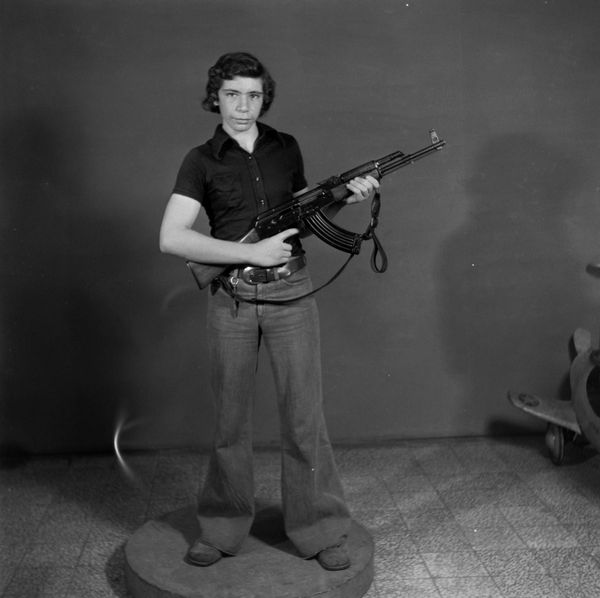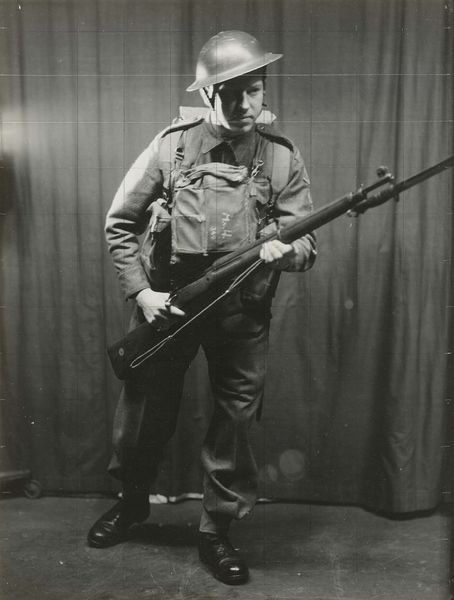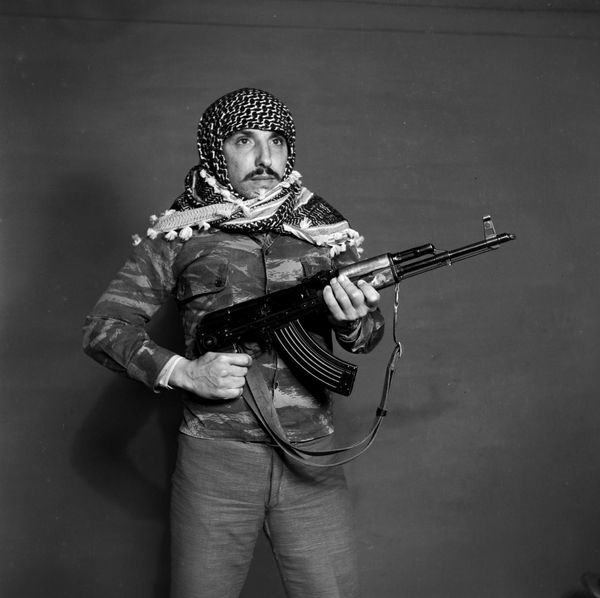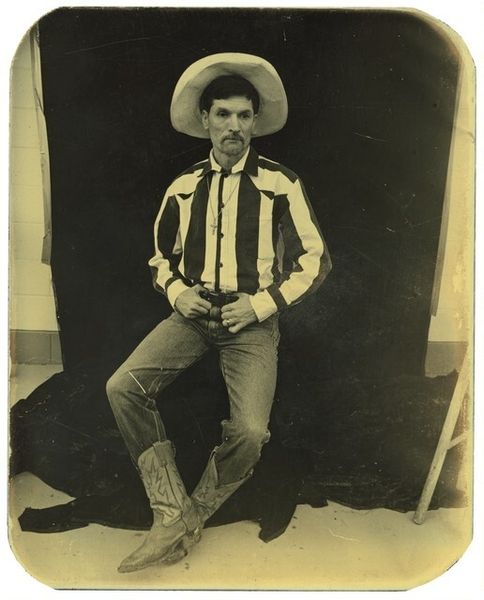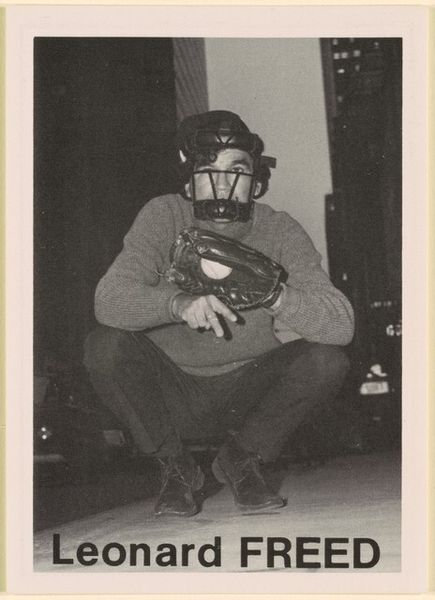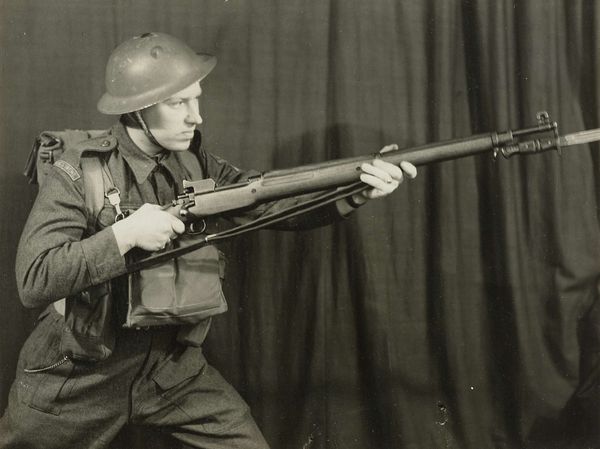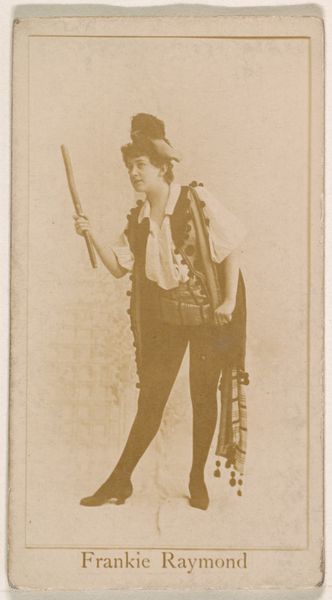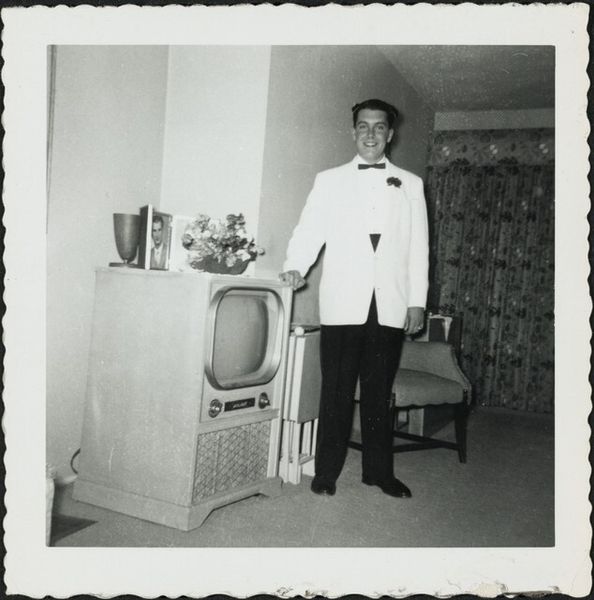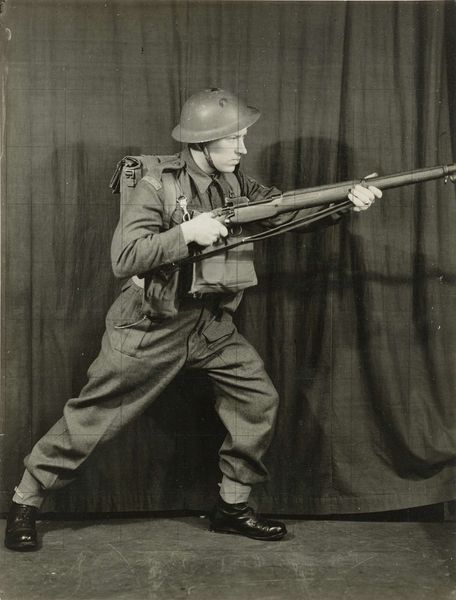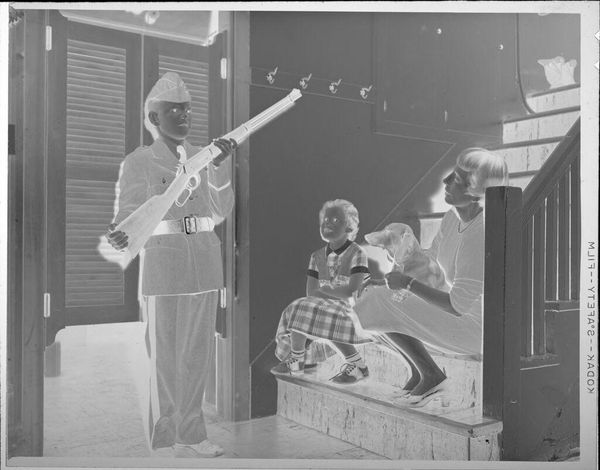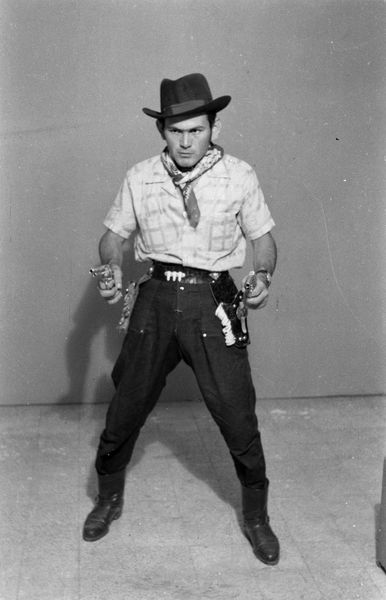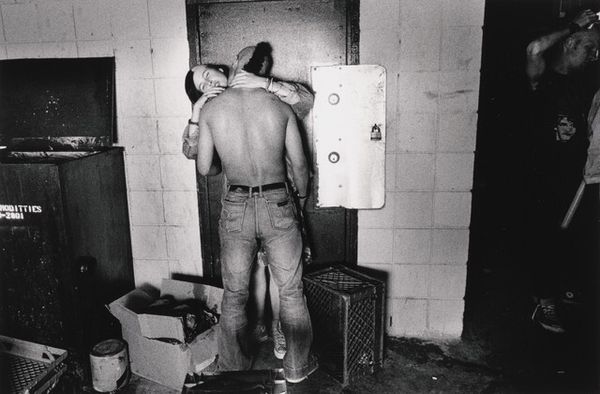
Hassan Jawhar. Studio Shehrazade, Saida, Lebanon, 1968-72. Hashem el Madani 2007
0:00
0:00
Dimensions: image: 290 x 292 mm
Copyright: © Akram Zaatari, courtesy Hashem el Madani and Arab Image Foundation, Beirut | CC-BY-NC-ND 4.0 DEED, Photo: Tate
Curator: This is "Hassan Jawhar. Studio Shehrazade, Saida, Lebanon, 1968-72" by Hashem el Madani, part of Akram Zaatari's exploration of the Arab Image Foundation. Editor: The studio portrait aesthetic clashes violently with the AK-47 he’s holding, doesn't it? It's this very calculated performance of masculinity and power, staged within a space meant for more conventional portraiture. Curator: Exactly. Studio Shehrazade served as a crucial site for documenting social identities in Saida. These photographs, originally meant for personal use, now act as historical documents, revealing much about self-representation during a turbulent period in Lebanese history. The gun itself becomes a prop, almost like a theatre piece. Editor: Yes, the weapon is clearly the focal point, but it is also an object, isn't it? A machine of war, mass-produced, placed carefully within the frame. What was the gun itself made of at this time, and how widely available were these arms? The means of production here is essential to read the image. Curator: It certainly speaks to the militarization of everyday life and raises questions about the power dynamics at play during that time. The studio acted as a public stage where such identities were constructed and performed. Editor: Well, seeing it this way, it makes me consider how intertwined the personal and the political truly are. Curator: For me, it illuminates how photography can be a powerful tool for shaping and preserving narratives.
Comments
tate 7 months ago
⋮
http://www.tate.org.uk/art/artworks/zaatari-hassan-jawhar-studio-shehrazade-saida-lebanon-1968-72-hashem-el-madani-p79465
Join the conversation
Join millions of artists and users on Artera today and experience the ultimate creative platform.
tate 7 months ago
⋮
This work is one of a series of black and white silver gelatin photographs of varying sizes that are collectively titled Objects of study/The archive of studio Shehrazade/Hashem el Madani/Studio Practices. All of the photographs were taken by the Lebanese commercial photographer Hashem el Madani between 1948 and 1982 and compiled into the present group, 117 of which are in Tate’s collection, by the Lebanese artist Akram Zaatari. All of the photographs include people, either alone, in pairs or in small groups, and most were taken in Madani’s studio, although some were shot outside and in his subjects’ homes. The series features men and women and covers a wide age range from babies to elderly people. Almost all of the sitters assume poses deliberately for the camera, sometimes accompanied by props or costumes, and most gaze directly towards the lens. Many of the pictures show subjects interacting in various ways, including embracing, kissing and acting out scenes, such as a mock wrestling match. The photographs are mostly tightly cropped, with the sitter or sitters filling most of the frame, although in some cases the figures are positioned further away from the camera, for instance when shown sitting at a table or standing behind a chair. The photographs tend to have sparse backgrounds, often dominated by a blank posterior wall. They are mounted on white paper, displayed in plain white frames and signed on the back by Madani. Many of them have been organised into categories by Zaatari – such as a group featuring men dressed as Syrian resistance fighters and a collection depicting newly married couples – while the rest are presented individually. Zaatari has stated that although he prefers these groups to be displayed together, this is not a requirement (Akram Zaatari, email to Rachel Taylor, 24 April 2008, Tate Acquisition file).
